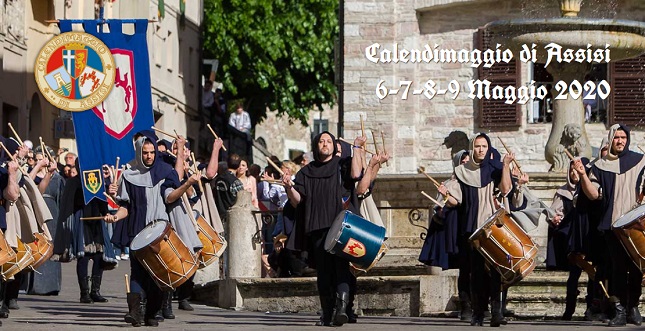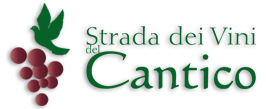Assisi Calendimaggio
May 6th/9th

The 'Calendimaggio' of Assisi is celebrated every year on May to celebrate the Spring coming. The town is divided into two parts: the Nobilissima Parte de Sopra and the Magnifica Parte de Sotto. This two parts challenge to gain the Palio via medieval parades, scenes and music exhibitions. A jury composed by experts in the fields of history, music and show, choose the winner part.

The history
The origins of the Calendimaggio are rooted in the pagan rites which celebrated the Spring coming and so the beginning of a new life after the Winter. During this period people wrote songs and poetic texts using ancient musical instruments, danced, sang, drank wine of the previous harvest to hope that the future harvest season would be more productive.
The name 'Calendimaggio' comes from the songs written during this period which were named 'canzoni del Maggio' ('May songs'). According to some ancient chronicles, at the beginning of the XII century, Assisi was very powerfull: extention of its walls, a lot of castles, magnificence of its churces, presence of painters such as Giotto, Cimabue, Simone Martini and Lorenzetti brothers.
During this period happens also the division of the town into the two parts ('Parte de Sotto' and 'Parte de Sopra') headed respectively by Fiumi family and Nepis family who want to control the town.
People are 'in peace' only during the celebration: during the period, despite of the turmoil, there are a lot of celebrations via dancing and singing. Moreover there is a lot of popular participation and the election of the 'king' of the 'party'. The citizens don't go home after the bell ringing after the Hail Mary, as usual, but they stay in the squares and in the streets to listen to the minstrels.
The Calendimaggio restarted in 1927 with a challenge between the citizens in the writing and singing of poetic texts. During the war the celebration was interrupted and restarted again in 1954.

The two parts
The town of Assisi is ideally divided into two territorial and people unit. The first one is named Nobilissima Parte de Sopra, and covers the Sestieri of Porta Moiano, S. Rufino and Porta Perlici, while the other one, Magnifica Parte de Sotto, covers the Sestieri of Porta San Giacomo, Porta San Francesco and Porta San Pietro.
For further information:
entecalendimaggiodiassisi@gmail.com
www.calendimaggiodiassisi.com
| Tweet |






















Request further information
Fill in the form below and send your request.